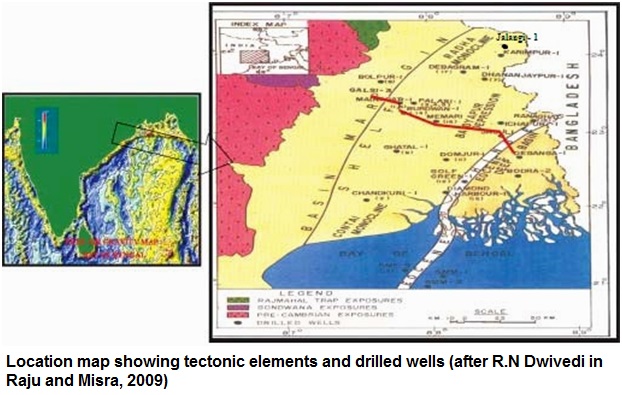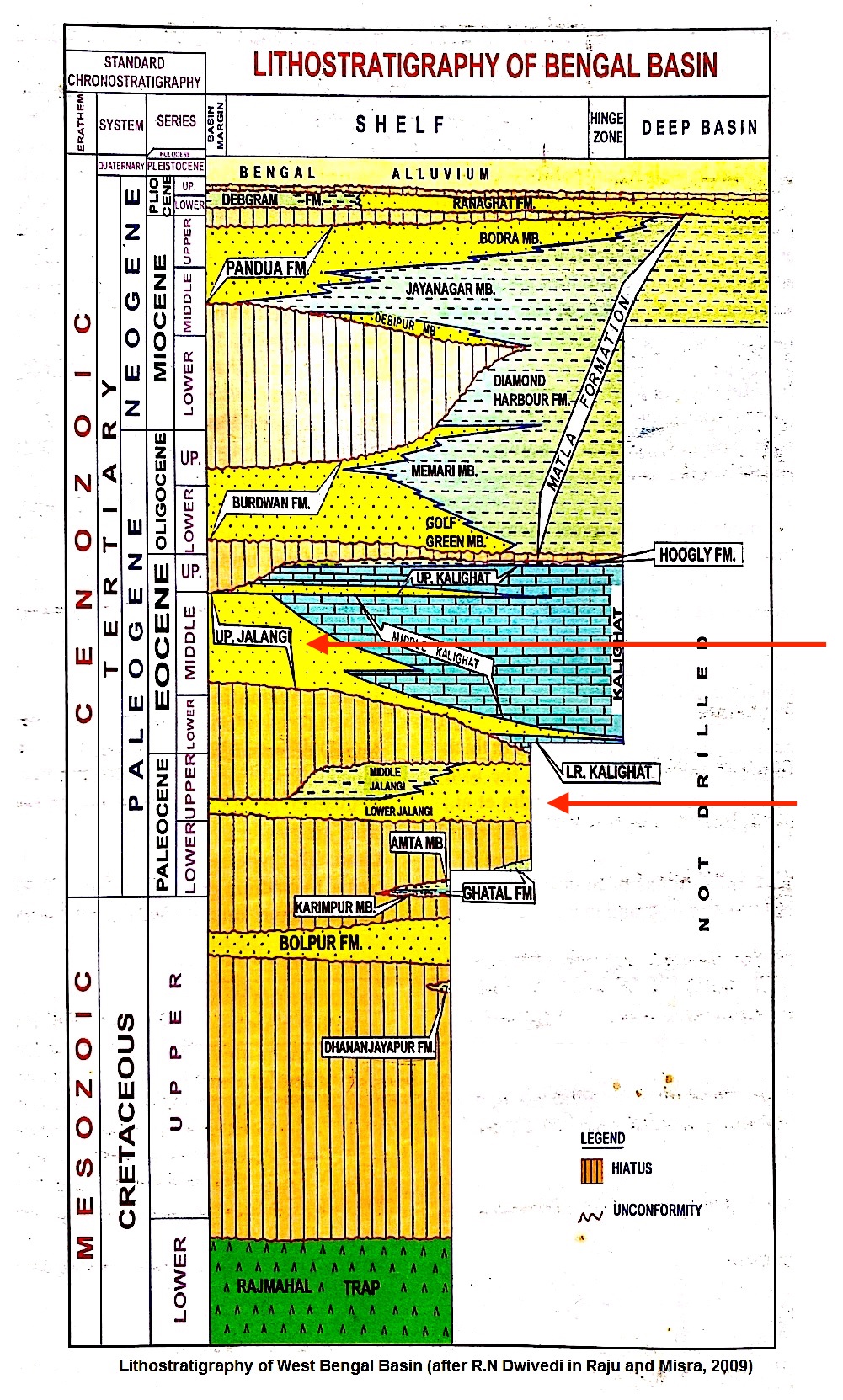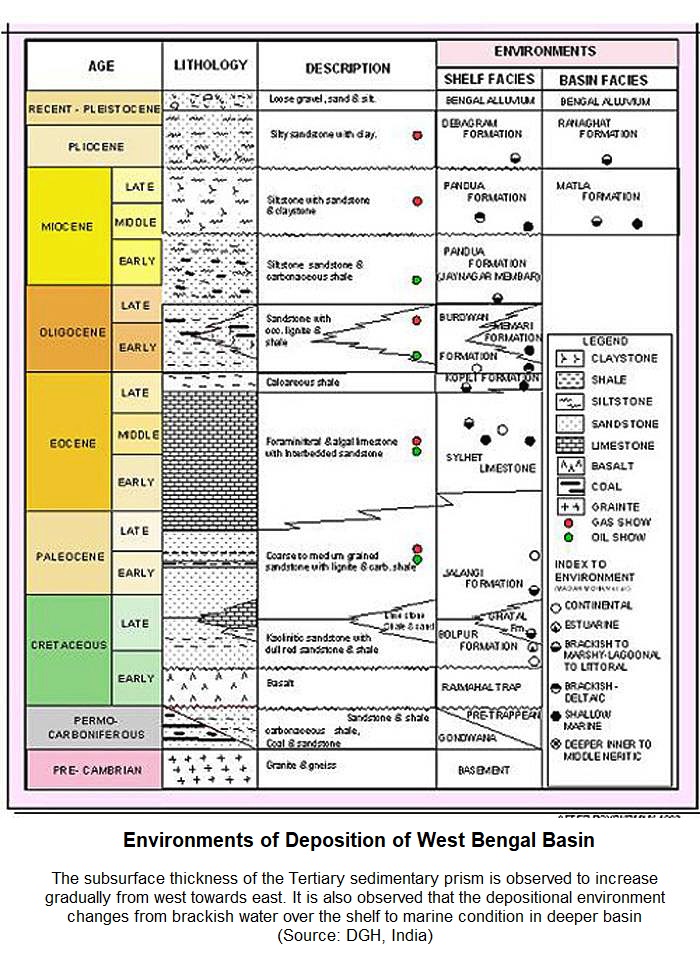Jalangi Fm
Type Locality and Naming
Type section is in the well Jalangi-1, Interval is 2407-3095 m and thickness is 688 m. [Original Publication: Biswas et al., (1963) Results of exploration for Petroleum in the Western part of Bengal Basin, India. Proc. 2nd Symp. Dev. Petrol Res. ECAFE Mins. Res. DeVol. Ser No. 18, pt 1, pp. 241-250.]
[Figure 1: Location map showing tectonic elements and drilled wells (after R.N Dwivedi in Raju and Misra, 2009)]
Lithology and Thickness
Sandstone. The type section is represented dominantly by coarse- to medium-grained, white to brownish sandstone. Carbonaceous matter and red shales are occasionally present. Towards the top, carbonaceous shale, coal and fine- to medium-grained sandstone are present. There is a general eastward increase in thickness. Maximum thickness of 640 m (+) has been met in Memari-1 well and still higher thickness is inferred within the paleodepression between Memari and Ghatal and between Memari and Radha by Chandra et al. (1993).
UNITS – The Jalangi Formation is subdivided into lower, middle and upper units.
(1) The Lower Jalangi is dominated by coarse to medium arkosic, light grey to dirty white sandstone.
(2) The Middle Jalangi is a coal shale unit with fine-grained, white sandstone.
(3) The Upper Jalangi is characterized by coarse- to medium-grained glauconitic sandstone.
[Figure 1: West Bengal Basin lithostratigraphy (after R.N. Dwivedi in Raju and Misra, 2009) with red-arrow showing position of this formation]
Relationships and Distribution
Lower contact
Lower boundary is unconformable with the Ghatal Fm.
Upper contact
Upper boundary is unconformable with the overlying Kalighat Fm. But, oddly, the Kalighat formation is not shown on the accompanying Bengal chart, and the Jalanghi is shown as continuing to top of Bartonian => maybe partly overlaps the Kalighat Fm?
Regional extent
Present in all on-land wells which are drilled up to this level. Partly coeval with Cherra Fm as used in NW Bangladesh; although correlation/dating of extent of both is problematic.
GeoJSON
Fossils
Foraminifera in the Jalangi Formation are rather sparse. In the lower and middle Jalangi, non-diagnostic agglutinated forms viz; Trochammina, Ammobaculites, and rare calcareous foraminifera occur. In well Domjur-1, the limestone sequence yielded very few Nummulites, Fasciolites and Lockhartia. Upper Jalangi yielded Nummulites acutus, N. discorbinus etc.
Age
Depositional setting
Paleocene Lower Jalangi Formation represents fan delta environment. Middle Jalangi Formation indicates presence of marginal delta/lower delta plain facies. Upper Jalangi was deposited in marine environment.
[Figure: Environments of Deposition of West Bengal Basin (from dghindia.gov.in)]
Additional Information


